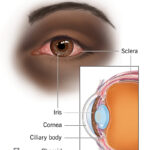Anal cancer is a relatively rare yet increasingly prevalent malignancy, with human papillomavirus (HPV) infection recognized as the primary etiological factor. Over 90% of anal cancer cases are associated with persistent infection by high-risk HPV types, particularly HPV-16 and HPV-18. The virus infects the squamous epithelium of the anal canal, where it may induce cellular transformations leading to high-grade anal intraepithelial neoplasia (AIN) and, eventually, invasive carcinoma.
HPV is a highly transmissible virus, often spread through sexual contact. While many infections resolve spontaneously, high-risk strains can remain dormant and later initiate oncogenic processes.

Mechanism of HPV Vaccination in Cancer Prevention
HPV vaccines are designed to elicit a robust immunological response against high-risk viral types before the onset of infection. These vaccines contain virus-like particles (VLPs) that mimic the structure of HPV but are non-infectious. Upon administration, they stimulate the production of neutralizing antibodies, creating long-term immunity against specific HPV strains.
The primary vaccines approved for use include:
- Gardasil 9: Covers 9 HPV types (6, 11, 16, 18, 31, 33, 45, 52, and 58)
- Gardasil: Targets HPV types 6, 11, 16, and 18
- Cervarix: Specifically protects against HPV-16 and HPV-18
Gardasil 9, the most comprehensive option, is now the standard in many countries due to its broad protection.
Efficacy of HPV Vaccination Against Anal Cancer
Numerous clinical trials and observational studies have confirmed the effectiveness of HPV vaccines in reducing precancerous anal lesions and, by extension, lowering anal cancer risk. In high-risk populations such as men who have sex with men (MSM) and individuals with HIV, the protective effect is especially significant.
- Efficacy in MSM: The Quadrivalent HPV Vaccine Study demonstrated a 75% reduction in AIN 2/3 (high-grade lesions) among vaccinated MSM aged 16–26.
- Protection in Women: While the primary goal has been cervical cancer prevention, vaccinated women also benefit from a reduced risk of anal HPV infection and associated malignancy.
Recommended Age and Target Populations for HPV Vaccination
Routine Immunization
- Children and adolescents (9–14 years): The ideal age group for vaccination, preferably before the onset of sexual activity.
- Catch-up vaccination: Recommended up to age 26 for those who missed the routine schedule.
High-Risk Populations
- MSM and transgender individuals
- People living with HIV
- Immunocompromised individuals
- Sexually active adults up to 45 years (based on individual risk assessment)
Extending vaccination coverage to these groups offers a crucial strategy for reducing the incidence of anal cancer and other HPV-related diseases.
Dosing Schedule and Administration
The dosing regimen depends on the age at the time of initial vaccination:
| Age Group | Number of Doses | Schedule |
|---|---|---|
| 9–14 years | 2 doses | 0 and 6–12 months |
| 15–45 years | 3 doses | 0, 1–2 months, and 6 months |
It is essential to complete the full series for maximum efficacy. Delays in dosing do not necessitate restarting the series.
Safety and Side Effects of HPV Vaccines
Extensive post-licensure surveillance has consistently shown HPV vaccines to be safe and well-tolerated. The most common side effects are mild and temporary:
- Pain or swelling at the injection site
- Headache
- Fever
- Nausea
- Fainting (vasovagal reaction)
There is no credible evidence linking the HPV vaccine to long-term adverse effects or fertility issues. Global health authorities, including WHO, CDC, and EMA, affirm its safety profile.
Public Health Impact and Cancer Prevention Strategy
HPV vaccination is a cornerstone of cancer prevention strategies globally. National immunization programs have led to:
- Dramatic reductions in HPV infection rates
- Lower prevalence of precancerous lesions
- Early indications of reduced anal and cervical cancer incidence
For instance, countries like Australia and the UK, which have achieved high vaccination coverage, report herd immunity benefits and decreasing trends in HPV-related diseases.
To enhance outcomes, vaccination efforts should be integrated with:
- Screening programs for high-risk individuals
- Awareness campaigns targeting underserved communities
- Global access initiatives to provide vaccines in low-income settings
Overcoming Barriers to HPV Vaccination
Despite its proven efficacy, HPV vaccine uptake remains suboptimal in several regions. Common challenges include:
- Vaccine hesitancy due to misinformation
- Cultural and religious concerns
- Lack of awareness about anal cancer risk
- Limited access in low-resource settings
Solutions involve:
- Health education campaigns emphasizing cancer prevention
- Involvement of primary care providers and educators
- Government policies supporting free or subsidized vaccination
Preventing anal cancer through HPV vaccination is a scientifically validated and cost-effective intervention. As HPV is responsible for the majority of anal cancer cases, immunization with Gardasil 9 offers critical protection—especially when administered before exposure. With continued expansion of vaccine access, improved public education, and proactive healthcare policies, we can dramatically reduce the global burden of anal cancer and safeguard vulnerable populations.

